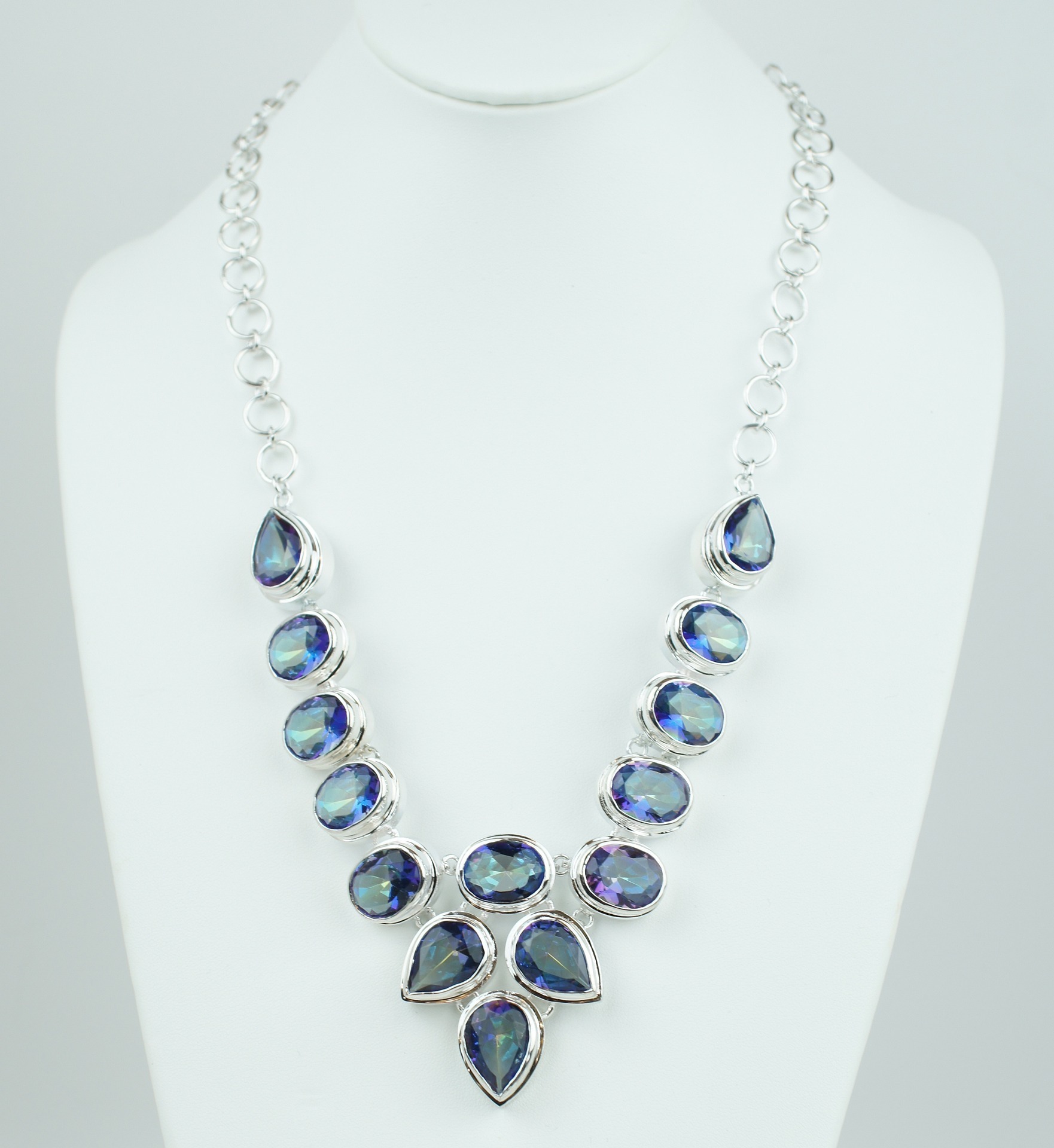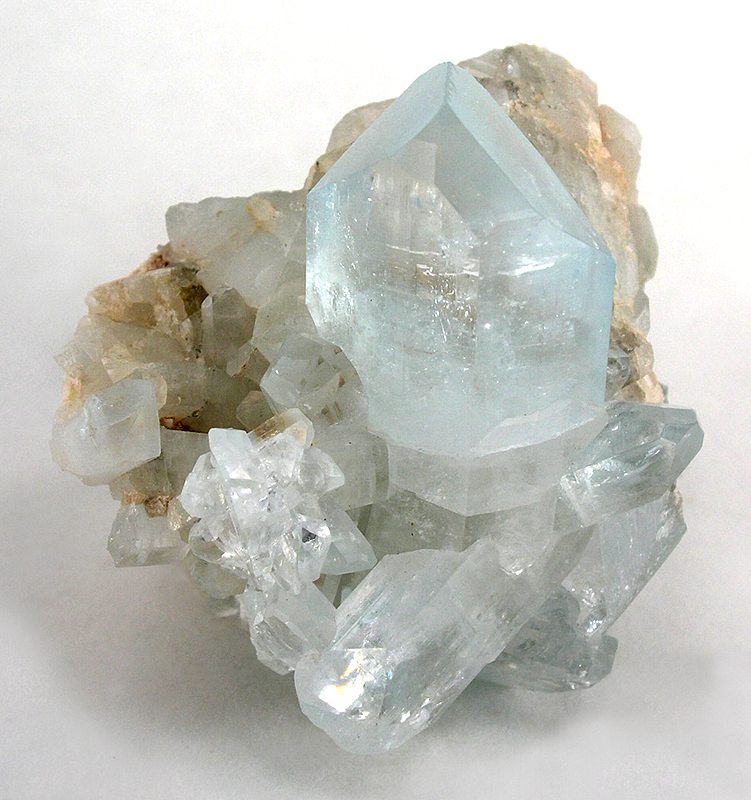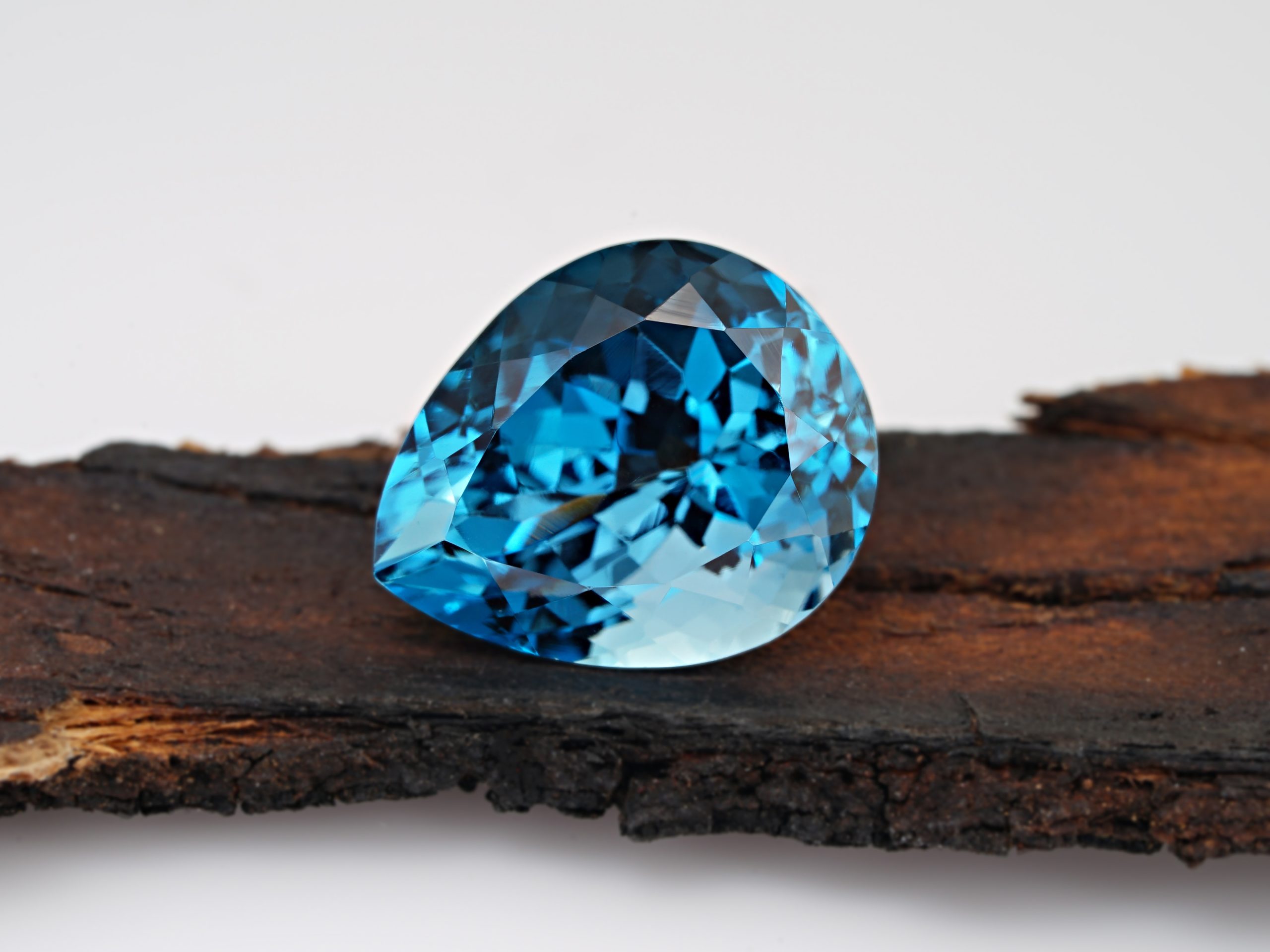Topaz is a gemstone known for having variety of colors. Among these colors are green, yellow, orange, red, pink, and blue. When Topaz is brought up, the primary color that comes to mind is its blue variety, even though its natural state is golden brown to yellow. Blue Topaz comes with shades of light to deeper blue color. One interesting fact about Topaz is that it also has a colorless variety which is heat-treated to produce a blue color variety.
Origin
Topaz gemstone is the gemstone associated with the month of November along with another gemstone called citrine. In the past, Citrine gemstone, which is commonly yellow in color is often mistaken with the yellow variety of Topaz. The main difference between the two is that Topaz is much heavier in terms of hardness which gives it more shiny sparkle compared to a citrine. Topaz is said to have been derived from the Greek name “Topazios” which was a name of a small island in the Red Sea.
In the past, Blue Topaz is not a popular gemstone on marketplaces. Most colors of Topaz sold in marketplaces were yellow to brown colors, and they are mostly sold in moderate prices.
Several experiments on gems including Topaz, revealed that a colorless variety of it can be treated and converted into a blue color gemstone.
How are treated gemstones processed?
Colorless Topaz are irradiated (expose to radiation) with either electron beams or in small nuclear reactors designed for development, in order to change its color. They are heat-treated as a final touch to get the color right. New subatomic particles enter the gemstone at a high velocity. This causes electrons to be knocked out of its orbits causing damage to its framework. When the original framework of the stone is damaged, it changes the way light travels through the crystals which changes the wavelengths of the light it absorbs. This causes the color to change.
Varieties of Heat-Treated Topaz
Light Blue
Light blue Topaz is a variety of heat-treated colorless Topaz. It is a color similar to a pale blue sky and a variety which almost resembles a turquoise or an aquamarine gemstone. The treatment used to produce a light blue Topaz is through a gamma ray.
Swiss Blue Topaz
Swiss Blue Topaz is another variety of heat-treated colorless Topaz which is characterized with a bright and electric blue color with light to a moderate saturation. It is much darker compared to the first one. Linear accelerator is used to turn a colorless Topaz into a Swiss Blue variant.
London Blue Topaz
London Blue Topaz is a product of heat treatment gemstone which produces a dark blue color, with a moderate to dark tone saturation. Some angles of a London Blue Topaz show a green color. To make a London Blue Topaz, a nuclear reactor is used.
Regulation on Treated Blue Topaz
Since radiation is used in treating colorless Topaz, several issues about its safety have been discussed. To avoid problems with its safety, all companies in the United States, that works with treated gemstones are required to be licensed under the Nuclear Regulatory Commission (NRC). The NRC makes sure that all irradiated gemstones must be stored securely in a facility after treatment. At the same time, they should be monitored to make sure that the residual radiation declines until it is safe enough to be used in jewelry making which will be later bought by the people.
Chemical Composition
Topaz is rated 8 in Mohs hardness scale, making it the hardest silicate mineral; but not harder than diamond, chrysoberyl, or corundum. No matter the color variation of a Topaz, all of them shares the same physical and chemical properties. Topaz is a silicate mineral (refers to rock-forming minerals) formed under cavities, igneous rocks, and metamorphic rocks.
Cost
The light blue heat-treated Topaz is a variation considered to be most affordable among the other two variations. The price of a light blue Topaz starts from $0.50 to $2 per carat and is mostly popular in Europe. The second variation which is Swiss Blue Topaz is popular variety of the color blue with primary consumer markets such as Asia, Europe, and the United States. The price of a Swiss Blue Topaz starts from $1.5 per carat. Lastly, the London Blue Topaz is marketed by Europe, Australia, and the United States with a price starting from $2.5 per carat.
Scarcity and Uses in Jewelry
Natural blue Topaz is scarce in nature which is why colorless variant of Topaz are treated to produce blue variants of them. With that given, we can say that there is an abundant amount of colorless Topaz mined around the World. However, not all color variant of Topaz is widely available, some of the colors with scarce variant include pink and orange crystals.
Blue Topaz is commonly used as a substitute of an Aquamarine gemstone because of their availability and almost similar feature. Blue Topaz are commonly used in jewelries such as rings, necklaces, pendants, earrings, and bracelets.
Where to Find Large Deposits of Topaz
The Ural Mountain of Russia has the highest deposits of Topaz. Brazil is also one of the places where large sizes of Topaz has been found. To make sure that the environment is protected as well as the indigenous tribes of an area where gemstone mining is processed, the Brazilian Government applied restriction on mechanized mining. In the present, other deposits and contributors of the gemstone includes Madagascar, the United States, Myanmar, Zimbabwe, Mexico, Pakistan, Sri Lanka, and many more.
Interesting Facts
- Blue Topaz is said to be a gemstone for communication and clarity. This is a good stone to practice difficulties in public speaking.
- Blue Topaz is said to be a substitute for Blue Sapphire, and is used as a gemstone to guard against financial issues and improves health.
- Blue Topaz is a gemstone to symbolize love, faithfulness, fortune, relaxation, kindness, wealth, and delight.
- While Topaz is considere the birthstone of November, Blue Topaz is associated as the birthstone for December.
- Blue Topaz is the gemstone of Utah.
- Egyptians wore blue Topaz as an amulet to protect them from any form of injury.
- The word Topaz is connected to the Sanskrit word “tapas” which means fire.
- “Ostro” which was discovered by a British explorer named Max Ostro, is the largest blue Topaz in the world weighing 4.4 pounds and 6 by 4 inches in size.
Final Thoughts
Blue Topaz is a rare type of Topaz. To be able to produce blue variant of the gemstone, colorless Topaz is experimented through heating and it was a success. The colorless Topaz made the availability of the blue colored Topaz possible. Now, with large amount of availability in the market, the blue Topaz is popularly used in jewelries as the material used or a center piece itself.



